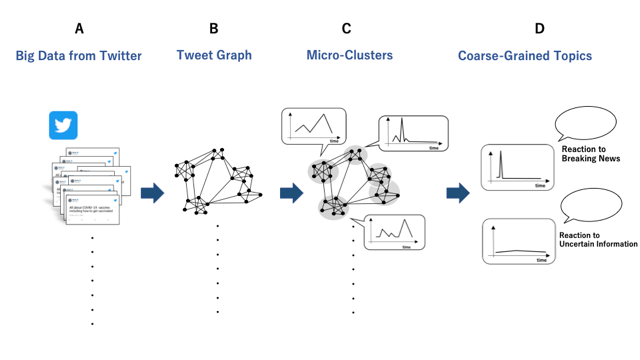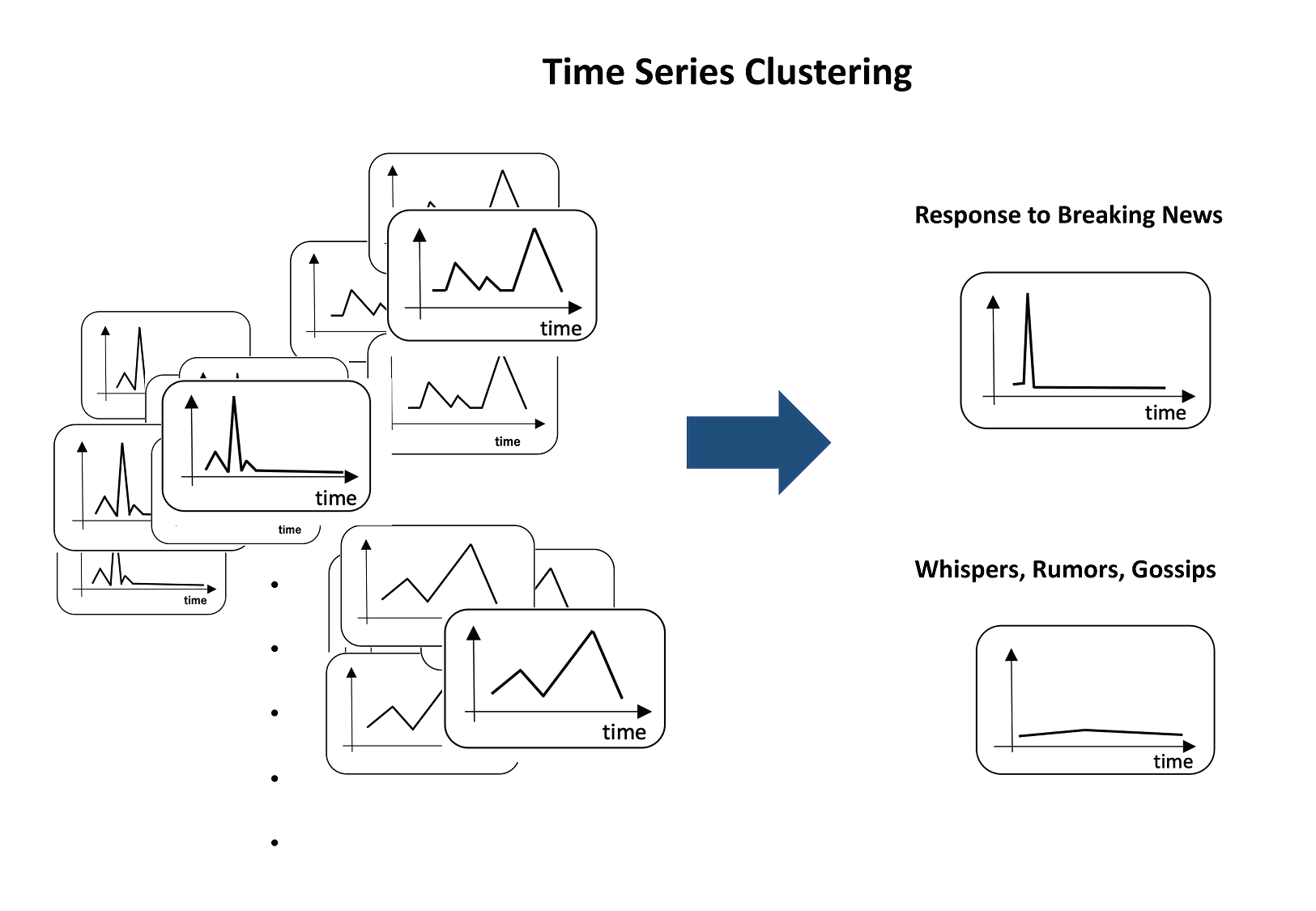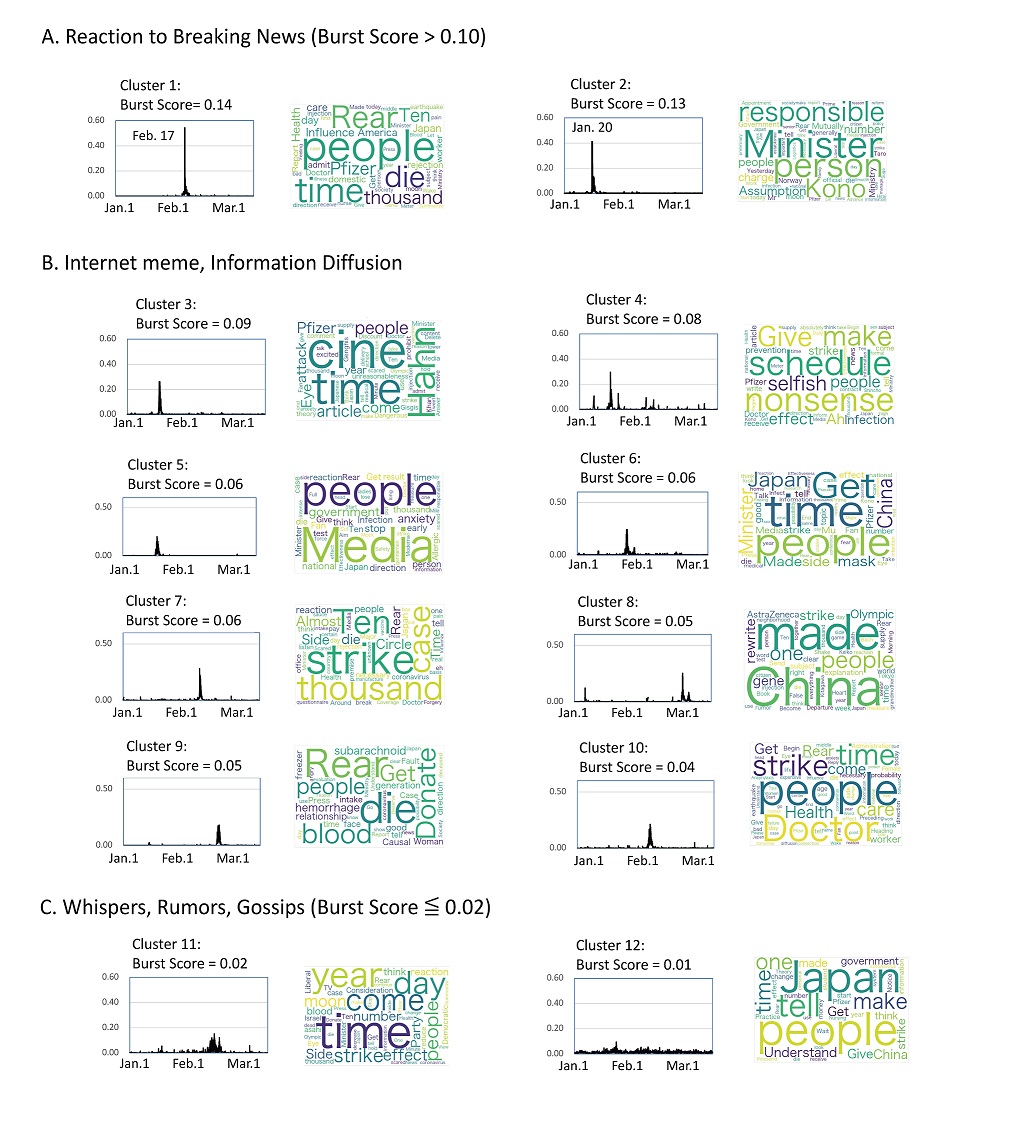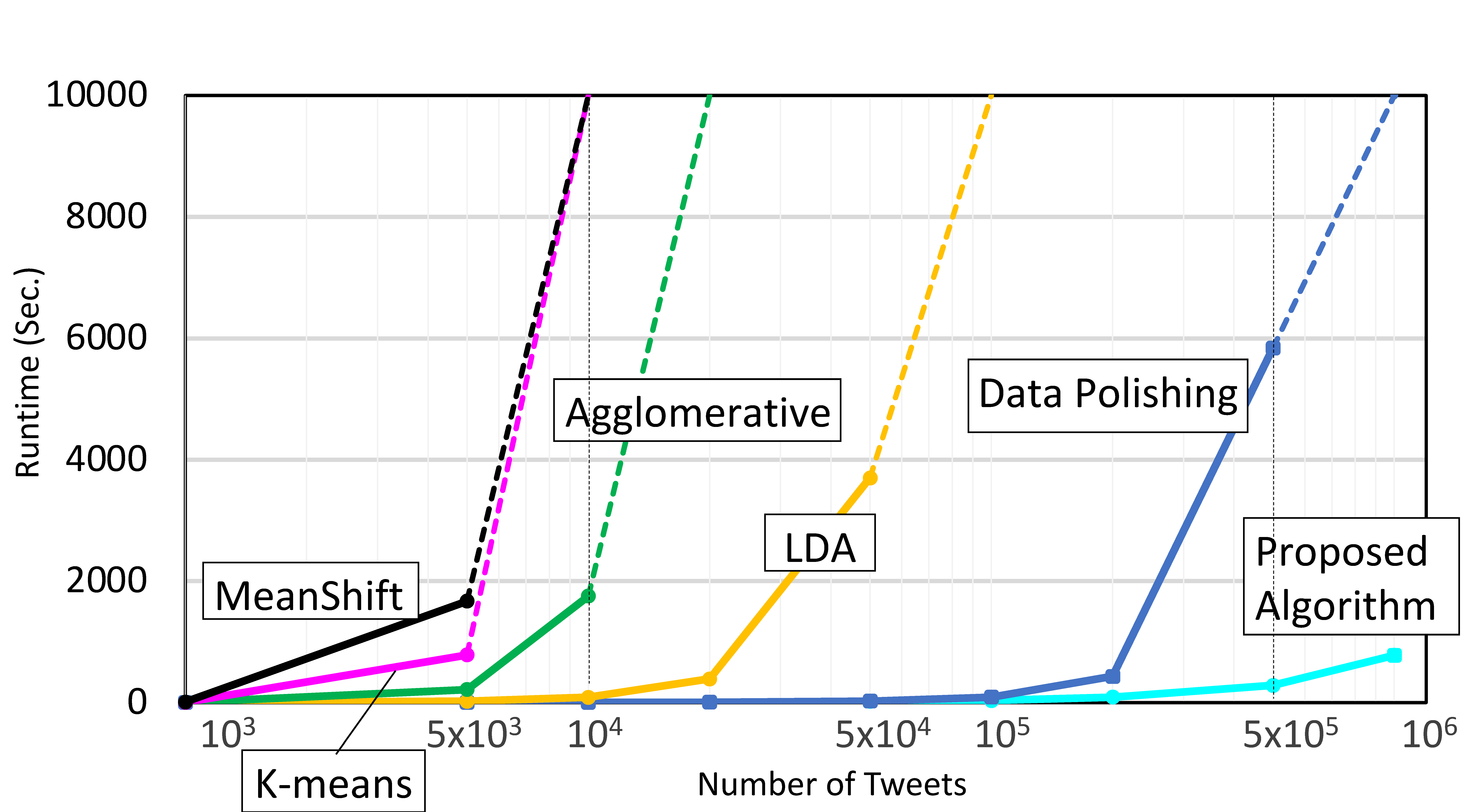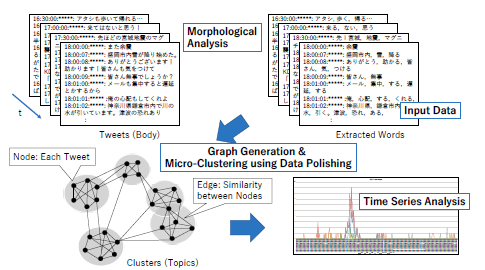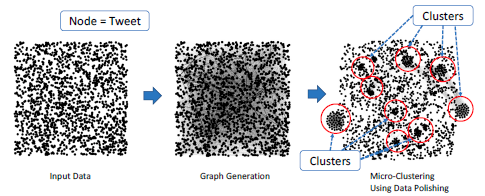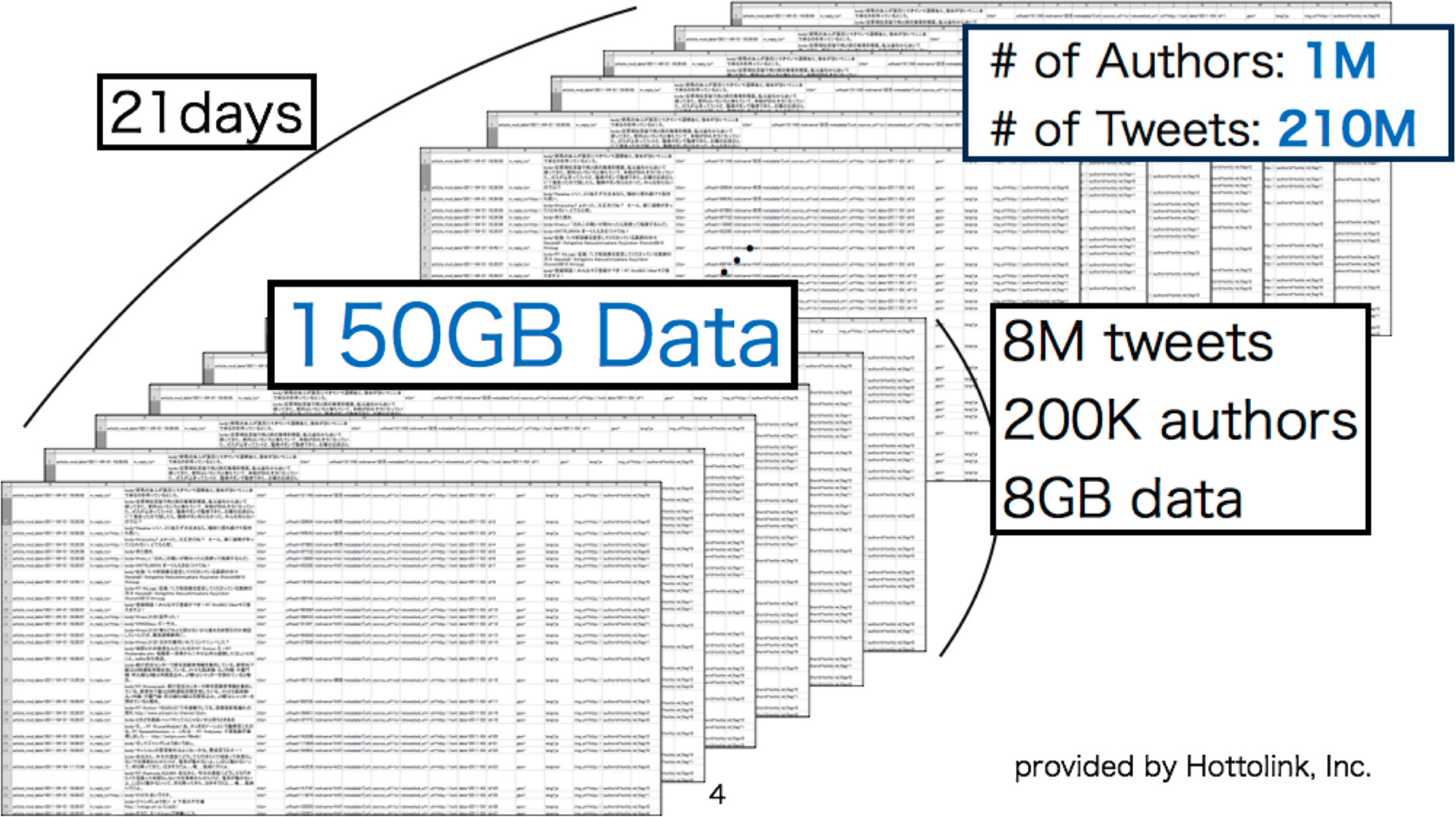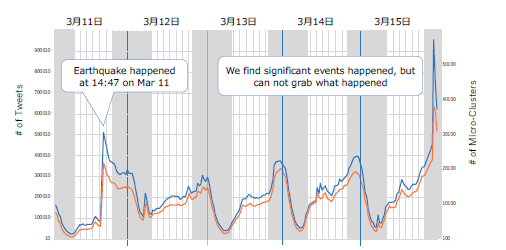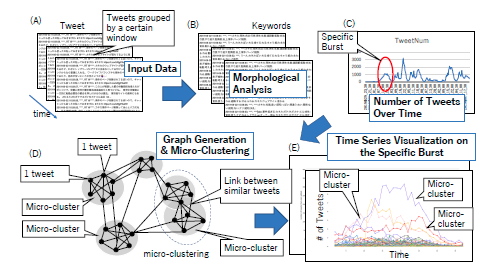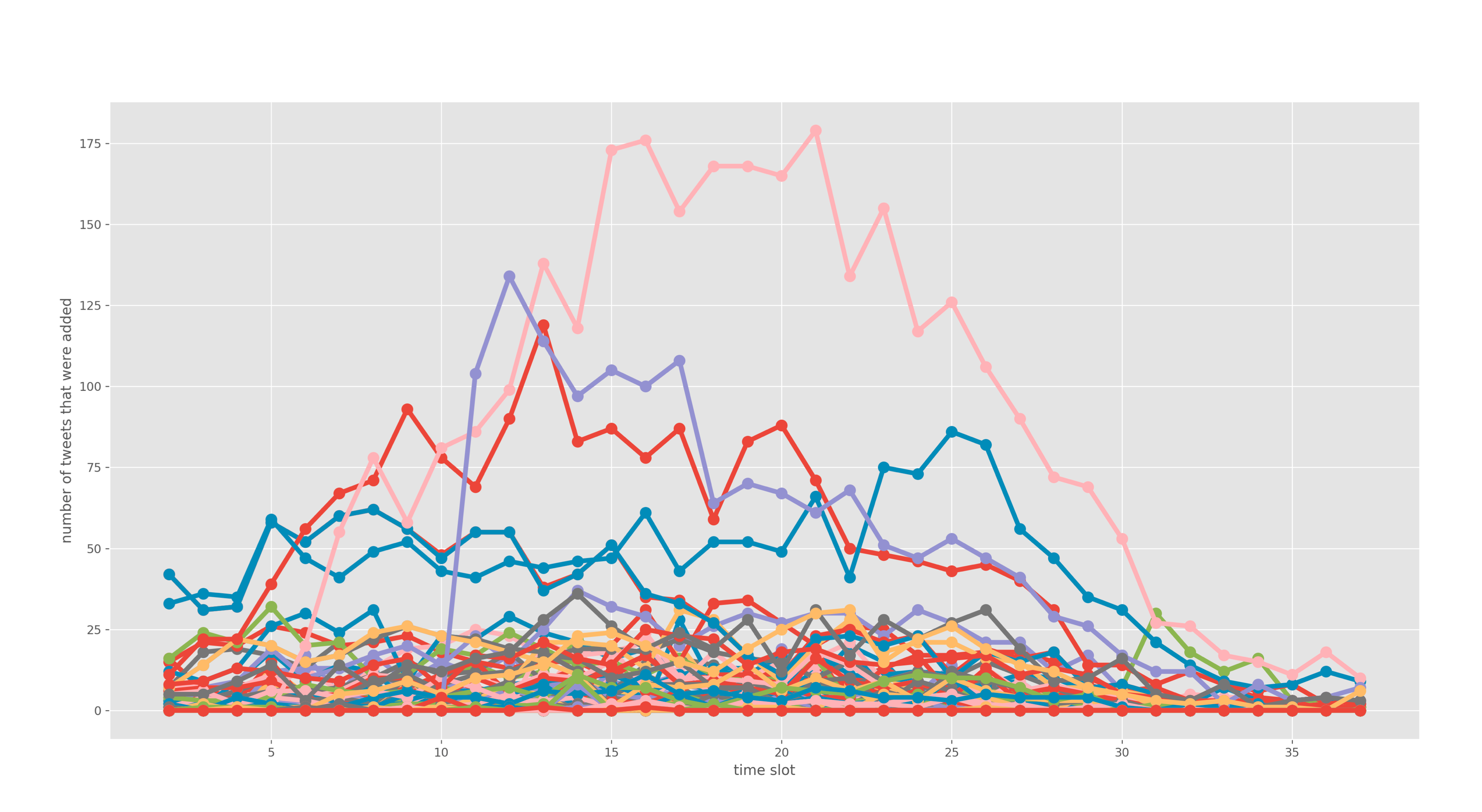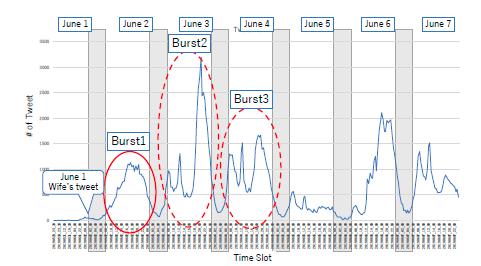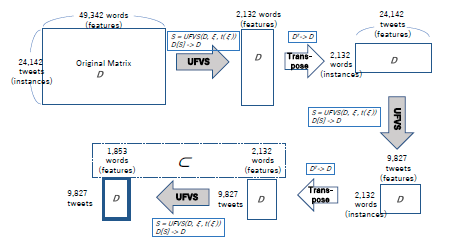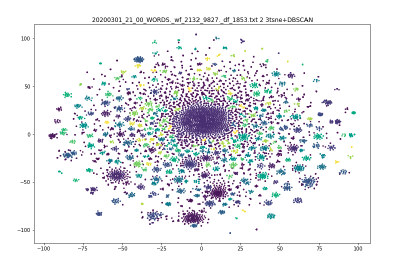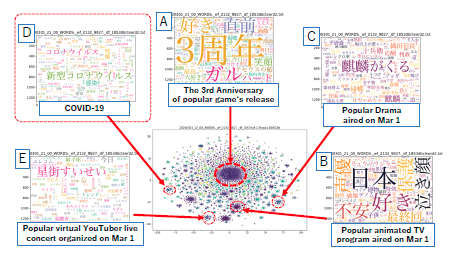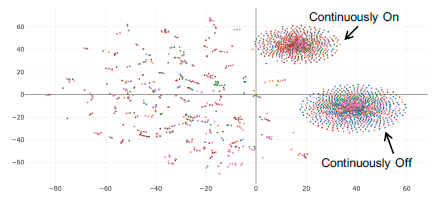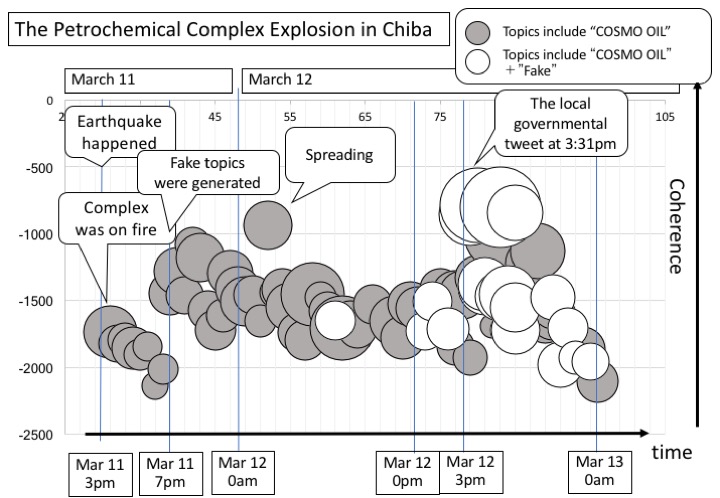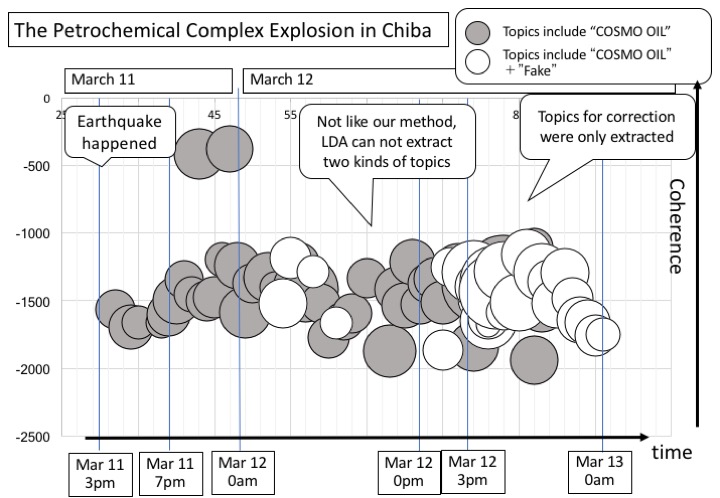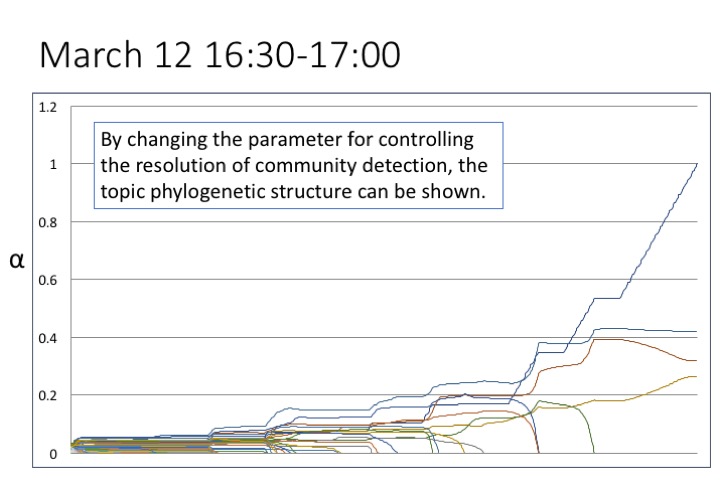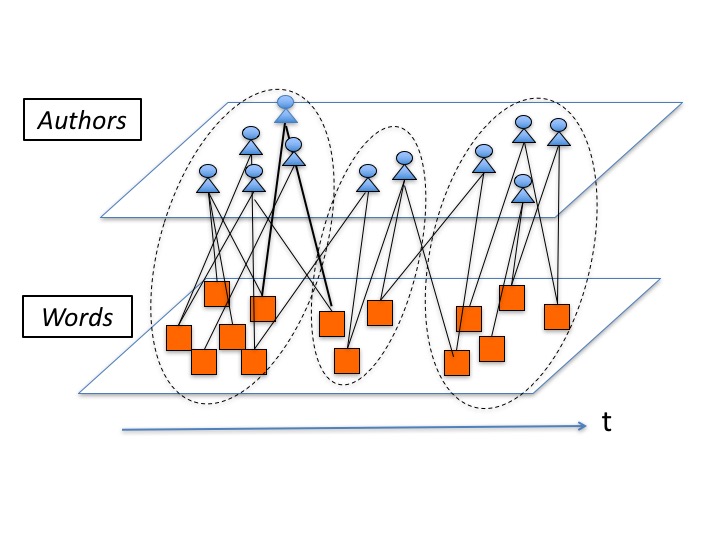
Vice President, Chiba University of Commerce (Professor)
This site introduces the research of Takako Hashimoto (Vice President, Chiba University of Commerce and Economics; Professor, Faculty of Commerce and Economics).
I am working on visualizing people’ s perceptions and uncertain situations such as flaming and rumors by structuring topics on large-scale social media. Original data mining techniques, time series analysis, etc. are being developed.
- Two-stage Clustering Method for Discovering People’s Perceptions: A Case Study of the COVID-19 Vaccine from Twitter
- Analyzing Temporal Patterns of Topic Diversity using Graph Clustering
- Time Series Topic Transition based on Micro-Clustering
- Twitter Topic Progress Visualization using Micro-Clustering
- Unsupervised Clustering based on Feature-value / Instance Transposition Selection
- Topic Life Cycle Extraction from Big Twitter Data based on Community Detection in Bipartite Networks
Two-stage Clustering Method for Discovering People’s Perceptions: A Case Study of the COVID-19 Vaccine from Twitter
Twitter is currently one of the most influential microblogging services on which users interact with messages.
It is imperative to grasp the big picture of Twitter through analyzing its huge stream data.
In this study, we develop a two-stage clustering method that automatically discovers coarse-grained topics from Twitter data.
In the first stage, we use graph clustering to extract micro-clusters from the word co-occurrence graph. All the tweets in a micro-cluster share a fine-grained topic…
Takako Hashimoto, Takeaki Uno, Yuka Takedomi, David Shepard, Toyoda Masashi, Naoki Yoshinaga, Masaru Kitsuregawa, and Ryota Kobayashi, Two-stage Clustering Method for Discovering People’s Perceptions: A Case Study of the Covid-19 Vaccine from Twitter
Analyzing Temporal Patterns of Topic Diversity using Graph Clustering
During a disaster, social media can be both a source of help and of danger: social media has a potential to diffuse rumors, and officials involved in disaster mitigation must react quickly to the spread of rumor on social media.
In this paper, we investigate how topic diversity (i.e., homogeneity of opinions in a topic) depends on the truthfulness of a topic (whether it is a rumor or a non-rumor), and how the topic diversity changes in time after a disaster….
Hashimoto, T., Shepard, D.L., Kuboyama, T. et al. Analyzing temporal patterns of topic diversity using graph clustering. J Supercomput 77, 4375–4388 (2021). https://doi.org/10.1007/s11227-020-03433-5
Time Series Topic Transition based on Micro-Clustering
This paper proposes a method for analyzing time series topic transition based on micro-clusters to present different situations that show people’s reactions to topical problems on the Web. To form micro-clusters, we leverage our original data polishing algorithm developed by one of the authors. Our method shows that micro-clusters efficiently represent the dynamics of topic transitions: for example, events cause sudden changes in the number of clusters….
Hashimoto, T., Uno, T., Kuboyama, T., Shin, K., & Shepard, D. (2019, February). Time series topic transition based on micro-clustering. In 2019 IEEE International Conference on Big Data and Smart Computing (BigComp) (pp. 1-8). IEEE.
Twitter Topic Progress Visualization using Micro-Clustering
This paper proposes a method for visualizing the progress of a bursty topic on Twitter using a previously-proposed micro-clustering technique, which reveals the cause and the progress of a burst. Micro-clustering can efficiently represent sub-topics of a bursty topic, which allows visualizing transitions between these sub-topics over time. This process allows for a Twitter user to see the origin of a bursty topic more easily…
Hashimoto, T., Kusaba, A., Shepard, D., Kuboyama, T., Shin, K., & Uno, T. (2020). Twitter Topic Progress Visualization using Micro-clustering. In 9th International Conference on Pattern Recognition Applications and Methods, ICPRAM 2020 (pp. 585-592). SciTePress.
Unsupervised Clustering based on Feature-value / Instance Transposition Selection
This paper presents FITS, or Feature-value / Instance Transposition Selection, a method for unsupervised clustering. FITS
is a tractable, explicable clustering method, which leverages the unsupervised feature value selection algorithm known as UFVS
in the literature. FITS combines repeated rounds of UFVS with alternating steps of matrix transposition to produce a set of
homogenous clusters that describe data well. By repeatedly swapping the role of feature and instance and applying the same
selection process to them, FITS leverages UFVS’s speed and can perform clustering in our experiments in tens milliseconds
for datasets of thousands of features and thousands of instances…
Kusaba, A., Hashimoto, T., Shin, K., Shepard, D. L., & Kuboyama, T. (2020, November). Unsupervised Clustering based on Feature-value/Instance Transposition Selection. In 2020 IEEE REGION 10 CONFERENCE (TENCON) (pp. 1192-1197). IEEE.
Topic Life Cycle Extraction from Big Twitter Data based on Community Detection in Bipartite Networks
This paper is showing a time series topic life cycle extraction from millions of Tweets using our original community detection technique in bipartite networks. We suppose that the authors role that means who belong to what topics is important to extract quality topics from social media data. We already proposed the topic extraction method that considers the relationship between the authors and the words as bipartite networks and explores the authors role by forming clusters as topics…
Hashimoto, T., Okamoto, H., Kuboyama, T., & Shin, K. (2017, December). Topic life cycle extraction from big Twitter data based on community detection in bipartite networks. In 2017 IEEE International Conference on Big Data (Big Data) (pp. 2740-2745). IEEE.
